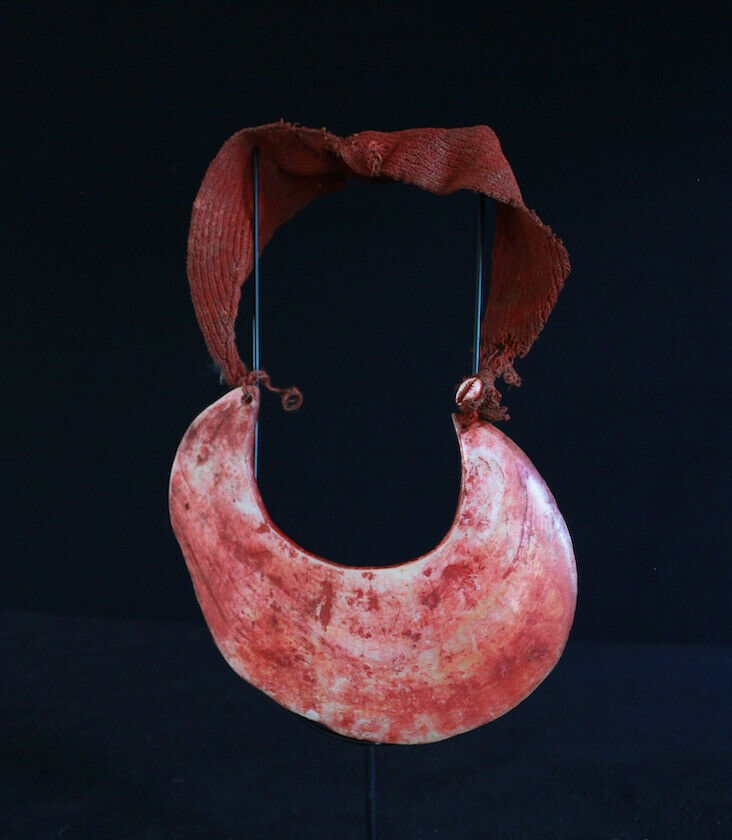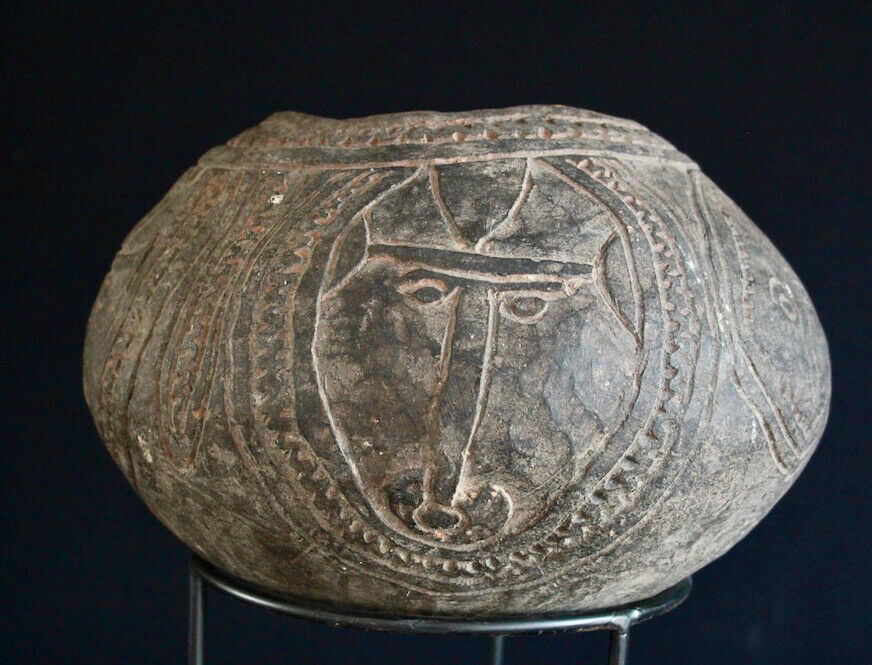-40%
Zhenlifu Proto Money Ring,Ethnographic Primitive Javanese Copper Trade Currency
$ 15.83
- Description
- Size Guide
Description
Zhenlifu Proto Money Ring,Ethnographic Primitive Javanese Copper Trade Currency(1) "ZHENLIFU” RING (Gulf of Thailand), Elongated, flat heads joined by a rounded stem, often twisted.
Copper alloy, 16.2 gm, 40mm across.Scarce piece.
Ancient old Antique Javanese trade rings excavated from the banks of the Brantas River in 2017 near a core site once inhibited by the Majapahit Empire (1293 to 1527).
The Majapahit Empire was a Javanese Hindu-Buddhist thalassocratic empire in Southeast Asia, based on the island of Java (part of modern-day Indonesia). Majapahit reached its peak of glory during the era of Hayam Wuruk, whose reign from 1350 to 1389 was marked by conquest which extended through Southeast Asia. Majapahit was one of the last major Hindu empires of the region and is considered to be one of the greatest and most powerful empires in the history of Indonesia and Southeast Asia, one that is sometimes seen as the precedent for Indonesia's modern boundaries. It's influence extended beyond the modern territory of Indonesia and has been the subject of many studies.
"Mitchiner's The History and Coinage of South East Asia (1998, p.28-32) presents examples of ring monies from South India through Japan, including several in "lead" from S. Thailand and S. Vietnam; he dates them to c. 200-600 AD but from the appearance of the metal I would say considerably later. In his 1979 Non-Is-laic & Colonial #2609-15 he attributes them to the Thai kingdom of Lavapura, c. 1050-1350. In Java, core of the old Majapahit Empire, they are called kelok. Money, Markets & Trade In Early Southeast Asia (1992, p.167) quotes O. W. Wolters (J. Siam Society, 1960), re. Zhenlifu, a kingdom on the Gulf of Thailand c. 1200 AD known only for sending tribute to China: "For trade dealings in clothing and food they use pieces of lead;" Wicks speculates that "non-functional loop earrings recovered archaeologically from many Dvaravati-period sites in Thailand" may relate to the rings published by Mitchiner.
TYPOLOGY: 1) Broken rings with thin top and bulbous ends; less worn specimens show a lateral casting seam, 2) Conventional rings with break; See: Zeno#51575. and 2b) overlapping coils and multi-coils of round to ovoid stock apparently cut from thick wire stock, not cast. Both ring forms exist in tin/lead/copper alloy, and bronze. Weights of these core types range from under 2gm to 50+gm with no clear pattern. Rarer variants: 3) With designs and/or crenelated (dragon back) & other shapes, usually large, 4) Elongated shape allowing a 360° rotation so bulbous ends point outward, 5) As #4 but the degree of bend variable, and the ends range from cone-like with flat ends to mushroom shape, 6) "Tadpole" shape with one bulbous end, flattened, curled, 7) As #1 but gap at thin end. See Zeno#210217."













